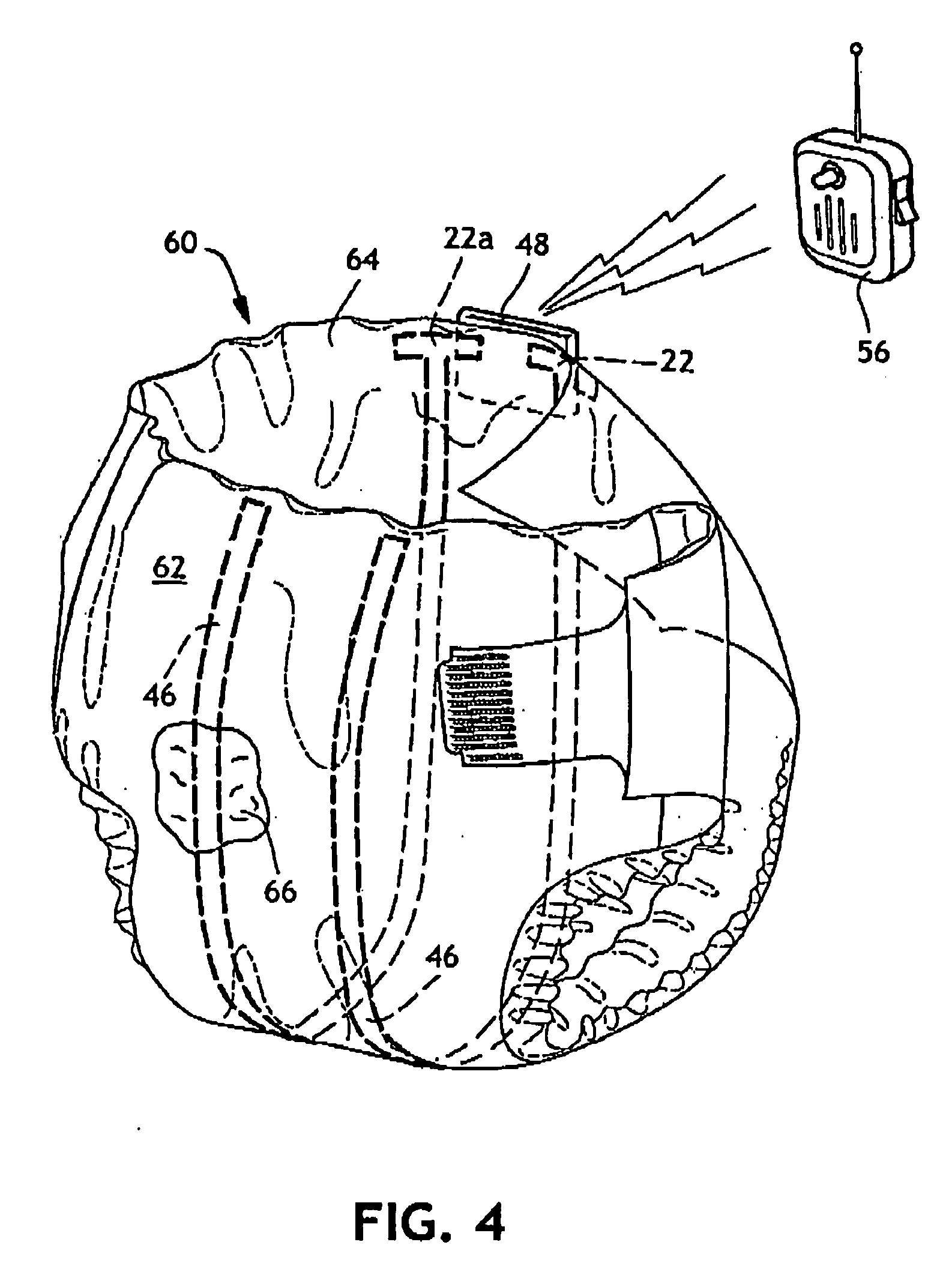Electrical conductivity bridge in a conductive multilayer article
a multi-layer, electrical conductivity technology, applied in the direction of printed circuit manufacturing, printed element electric connection formation, solid-state devices, etc., can solve the problem of producing more complex arrays of circuit paths with fewer layers of substrate material
- Summary
- Abstract
- Description
- Claims
- Application Information
AI Technical Summary
Benefits of technology
Problems solved by technology
Method used
Image
Examples
examples 1-3
[0105]A first material was a composite film composed of 12 μm thick polyester substrate layer and a first circuit-path provided by a 12 μm thick aluminum foil. It is believed that the 12 μm thick aluminum circuit-path could be readily provided by printing a conductive aluminum ink onto the polyester substrate. A second material was composed of 0.75 mil (0.00075 inch) thick poly film with a second, 100 nm thick copper circuit-path printed on one side of the film.
[0106]Prior to bonding, the materials were arranged such that the copper circuit-path was on one side of the 0.75 mil poly film, and the aluminum circuit-path was against an opposite side of the 0.75 mil poly film. The aluminum circuit-path was operatively aligned with the copper circuit-path, and the aluminum foil material was bonded to the printed-copper circuit-path through the thickness of the 0.75 mil poly film. A BRANSON ultrasonic bonder Model 931 was used to bond the samples. The 20 kHz bonder was set at a 50 PSI bond...
PUM
 Login to View More
Login to View More Abstract
Description
Claims
Application Information
 Login to View More
Login to View More - R&D
- Intellectual Property
- Life Sciences
- Materials
- Tech Scout
- Unparalleled Data Quality
- Higher Quality Content
- 60% Fewer Hallucinations
Browse by: Latest US Patents, China's latest patents, Technical Efficacy Thesaurus, Application Domain, Technology Topic, Popular Technical Reports.
© 2025 PatSnap. All rights reserved.Legal|Privacy policy|Modern Slavery Act Transparency Statement|Sitemap|About US| Contact US: help@patsnap.com



